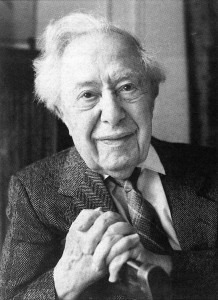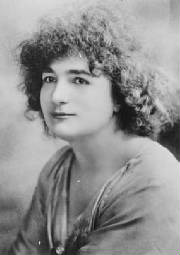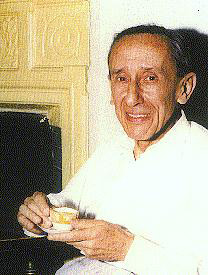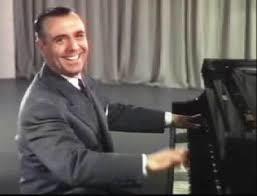
Mieczysław Horszowski in 1990
When you trace his influences, we find that his first teacher was his mother, who had been a student of Karol Mikuli who had been a student of Chopin’s. He then became a pupil of Theodor Leschetizky, who had studied with Carl Czerny who had been a student of Beethoven. Thus, in one performer, we have both the great German and Polish piano traditions.
His first notable performance was in Warsaw at age 9 of Beethoven’s Piano Concerto No. 1, and his international career as a child prodigy began thereafter, with tours of Europe and America.
His repertoire was limited because he was small, barely 5 feet tall as an adult, and therefore couldn’t play the works that required a large hand span. His repertoire, therefore, was diverse and ranged widely over both the Classical and Modern periods. He performed the entirety of Beethoven’s solo piano repertoire in New York in 1954-55 and all of Mozart’s piano sonatas in 1960. He also played music by Bach and Stravinsky.

Mieczysław “Miecio” Horszowski in 1902
Chopin: Piano Concerto No. 1 in E minor, Op. 11: III. Rondo: Vivace (Mieczyslaw Horszowski, piano; Vienna Symphony Orchestra; Hans Swarowsky, cond.)
In the final movement of Beethoven’s Hammerklavier, he brings a sense of both sound and silence.
Beethoven: Piano Sonata No. 29 in B-Flat Major, Op. 106, “Hammerklavier”: IV. Largo – Allegro disoluto (Mieczyslaw Horszowski, piano;)
An amazing pianist and teacher to the end, he gave his last lesson a week before his death. His students at the Curtis Institute of Music included Richard Goode, Dina Koston, Anton Kuerti, Murray Perahia, and Peter Serkin, among many others.
For more of the best in classical music, sign up for our E-Newsletter








I attended Horszowski’s last public recital in Philadelphia, October 31, 1991. His final encore, the Chopin Prélude in B minor, was unforgettable.
In addition, I have had published articles on Horszowski in Baker’s and in the old “Clavier” keyboard magazine.
That was an amazing concert. I was there too. I remember wondering at the start whether he was going to make it to the piano as he was so unsteady, but once he started to play he was completely secure.